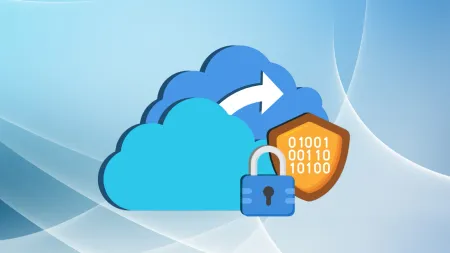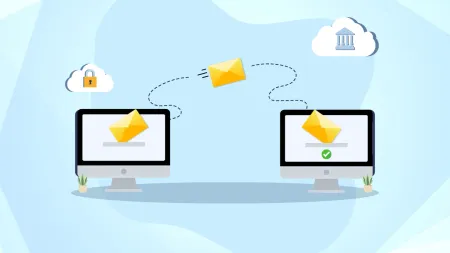Top 5 Takeaways From the 2017 Gartner IaaS Magic Quadrant
The infrastructureasaservice model has made enterpriselevel computing availableand affordable to businesses of all sizes In fact the public clo...

The infrastructure-as-a-service model has made enterprise-level computing available and affordable to businesses of all sizes. In fact, the public cloud market is on pace to grow 18 percent in 2017, with IaaS driving most of that growth. The recent 2017 Gartner IaaS Magic Quadrant also mirrored these trends.
What Is the IaaS Magic Quadrant?
Every year, Gartner releases its Magic Quadrant for cloud IaaS. The quadrant ranks cloud vendors on two main criteria: Completeness of Vision and Ability to Execute.
The Main Quadrant for IaaS is divided into four sub-quadrants:
- Leaders: vendors who excel in both vision and ability to execute. Amazon’s AWS and Microsoft Azure were the only two vendors to land the leaders category this year.
- Visionaries: vendors who are strong on vision but weaker in ability to execute. Google, IBM, Alibaba Cloud and Oracle were ranked as visionaries.
- Niche Players: vendors who are average on both vision and ability to execute. Rackspace, Virtustream, CenturyLink, Joyent, Interoute, Skytap, Fujitsu and NTT Communications made it as niche players.
- Challengers: vendors who are short on vision but strong in ability to execute. No vendor ranked in this category this year.
Key Takeaways: 2017 Gartner IaaS Magic Quadrant
More businesses are adopting the IaaS model, and the trend will continue in 2017 and beyond. Here are some highlights from the 2017 Gartner IaaS Magic Quadrant that reinforce these trends:
1. The IaaS field is expanding
The IaaS market has consistently been the fastest-growing cloud segment. More small businesses are using the cloud to enhance innovation and improve security, fueling rapid IaaS growth for key players.
Gartner bucked the trend this year and ranked 14 vendors in its magic quadrant instead of the usual 10. Alibaba, Oracle, Interoute and Joyent were the new entrants.
2. AWS and Microsoft Azure rule the IaaS space
Amazon Web Services (AWS) and Microsoft Azure have consistently ranked in the leaders category in Gartner’s IaaS Magic Quadrant, and this year was no different.
AWS is the largest public cloud, with an annual revenue run rate exceeding $14 billion. It’s a highly customizable cloud with a rich portfolio of service options, wide support for third-party APIs and a strong emphasis on securing server instances. AWS is a great option for a variety of small, medium and large organizations.
Meanwhile, Azure remains the second-largest public cloud and the only true challenger to AWS. It originated as a PaaS (Platform-as-a-Service) but now offers a highly comprehensive suite of IaaS functionalities including CDN batch computing, a container service and serverless computing.
Microsoft is the world’s largest enterprise software vendor, making Azure a top choice for the millions of organizations running Windows software.
3. Google Cloud is coming up
The Gartner IaaS Magic Quadrant ranked Google Cloud the third most developed IaaS platform.
According to Gartner, Google Cloud excels in batch computing, Big Data migration, DevOps-style operations and cloud-native applications. Google Cloud is increasingly becoming a viable cloud alternative to Azure for enterprise customers, especially those looking to host traditional IT processes and workloads.
4. Oracle and Alibaba improved most in the Gartner IaaS Magic Quadrant
Oracle and Alibaba Clouds made it to the Magic Quadrant for the first time ever.
Oracle’s Gen 2, consisting of both bare-metal and virtualized servers, is ideal for cloud-native applications. Alibaba, a leader in the Chinese IaaS space, features an impressive ecosystem of ISVs and managed services providers.
5. Cloud vendors are increasingly embracing open-source
For a long time, finding a reliable cloud platform to back up your Linux workloads was an uphill task, mainly because Linux distributions usually lack their own cloud services.
Luckily, the cloud leaders have increasingly become vendor- and platform-agnostic. You can now backup a wide variety of Linux servers on AWS, Azure and Google Cloud. Additionally, Fujitsu now offers K5, an OpenStack-based platform.
Catapult Your Business With IaaS
The IaaS model has the potential to transform the way you manage and leverage data. But before migrating to an IaaS platform like Azure or AWS, you need to align project goals with business expectations. Agile IT has more than a decade of experience in the transformative cloud computing and cloud engineering industries.
Need help mapping out your cloud implementation strategy? Contact an Agile IT cloud specialist today.





